Gorges de l’Areuse Hike and Saut De Brot Viewpoint, Neuchâtel, Switzerland
The hike through the Gorges de l’Areuse is mostly known for the beautiful Saut de Brot, a stone bridge built across the narrow gorge. The bridge looks straight out of a fairytale or a fantasy book.
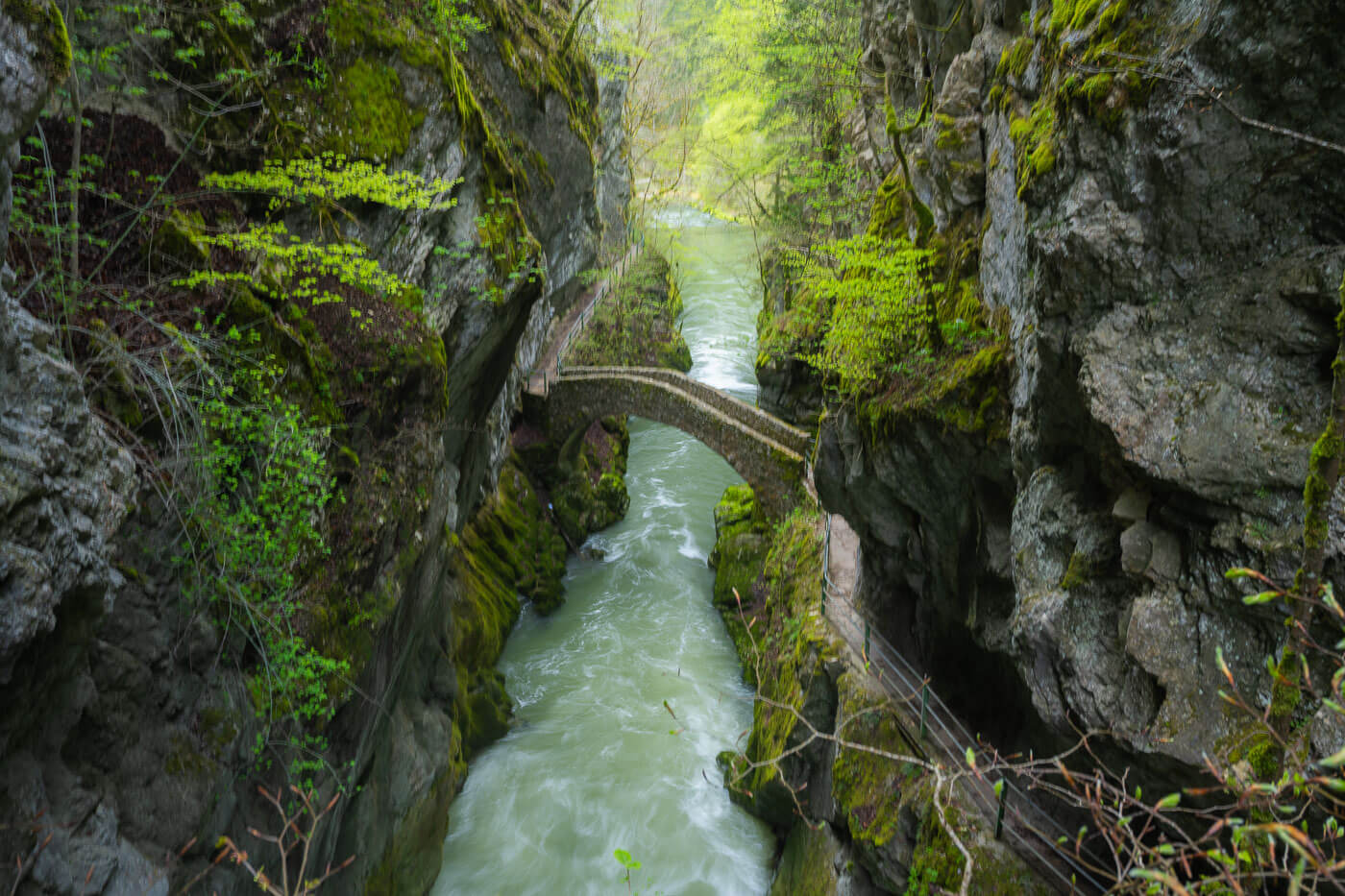
Saut de Brot in Gorge de l’Areuse
The reality is that the bridge is part of a path that connects different hydroelectric power plant. Although this is not as inspiring as some folk legends, the bridge through the narrow canyon is still a unique sight.
The hike through the gorges and down the river is nice in itself, as there are many waterfalls along the way, as well as several viewpoints on the gorges, both at the beginning and toward the end of the hike.
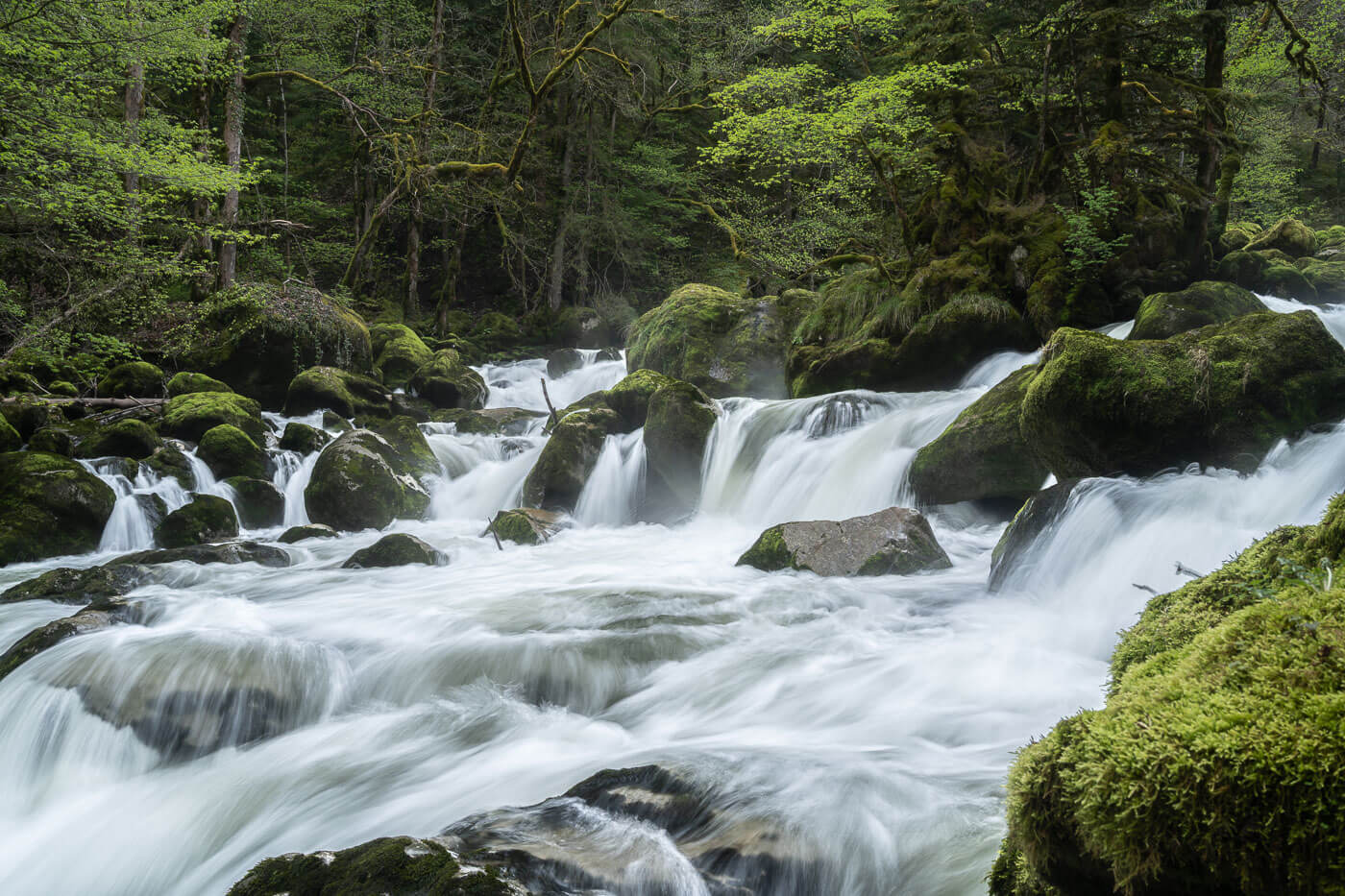
One of the many waterfalls along the Areuse River.
Table of Contents
Overview of the Gorges de l’Areuse Hike & Map
This is a one-way hike. Typically, the sense of travel is downhill, from Noirague to Boudry.
While the trail is relatively long at 11+ KM, the hike per se is easy. The trail is well-maintained, and for long stretches, it follows a service road of the hydropower plant that harnesses the Areuse River. So it is suitable for all skill levels or anyone used to walking that distance.
| Max Altitude | 730m |
|---|---|
| Distance | 11.8 KM |
| Elevation gain | 130m ↑ / 350m ↓ |
| Hike time | 03:00/ 04:00 Hours |
| Hike Difficulty | Easy |
Here is the map of the hike through the Areuse Gorges. You can download the GPX file for free from the activity linked below if you’d like to do so.
How to get to the Areuse Gorges trailhead and Parking
With this being a one-way hike, you have the option to choose either Noirague or Boudry as the starting point. Again, Noirague is the most common and easiest option, as the trail is mostly downhill from there. Boudry is also an option, and the trail is a little more challenging because there is more elevation gain involved.
- Driving Directions: To get to Boudry, you can take the A5 Highway and, either from the direction of Geneva or Zurich/Lucerne, take the Boudry exit and follow directions for Boudry Gare (Station). To get to Noirague, from the A5 highway, you can take the Areuse (from Geneva) or Neuchâtel (from Zurich/Lucerne) exit, then follow the Noirague until you reach the train station.
- Parking: Parking around the Boudry train station is limited. There are some spaces with free parking for up to four hours, but these would fill up quickly. In Noirague, there are large parking areas around the station, all paid.
- Public Transport: As taking a train is involved anyway, you can easily take the train to Noirague, hike back down to Boudry, and then take the train back home from Boudry again. The Train connection between Boudry and Noirague takes about 40 minutes and requires on stop at Auvernier. Note the connection runs once per hour during the day. Timetable on the SBB website.
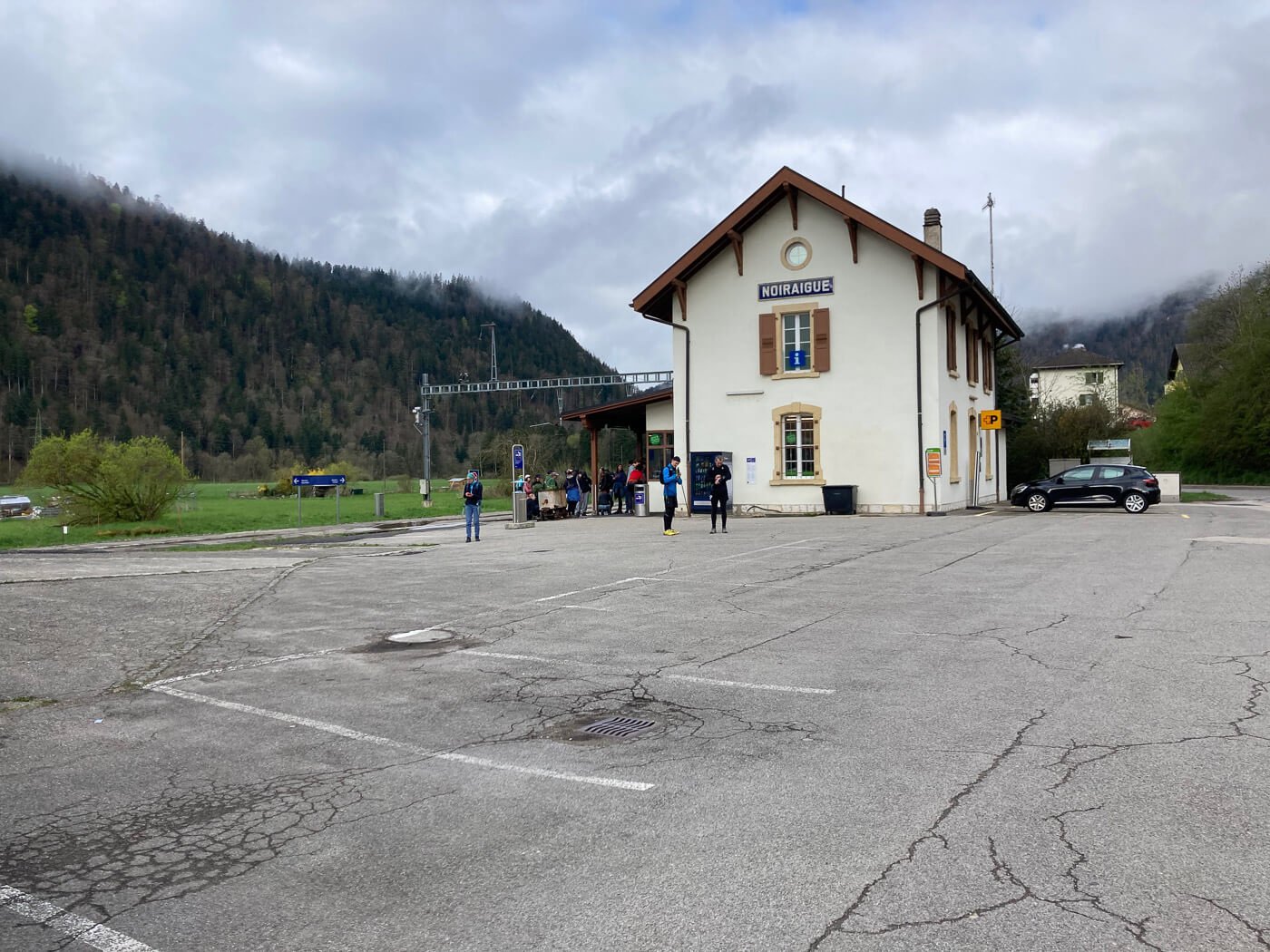
Niorague’s Train station, the starting point of the hike.
The Gorges de l’Areuse Hiking Trail
From Noirague’s train station, you’d first have to walk through the village and then follow the train track, downhill. After about one kilometer, you’ll come to a junction where you can cross the railway tracks. From here, the trail will follow the Areuse river downstream.

The trail initially follows the railway downhill.
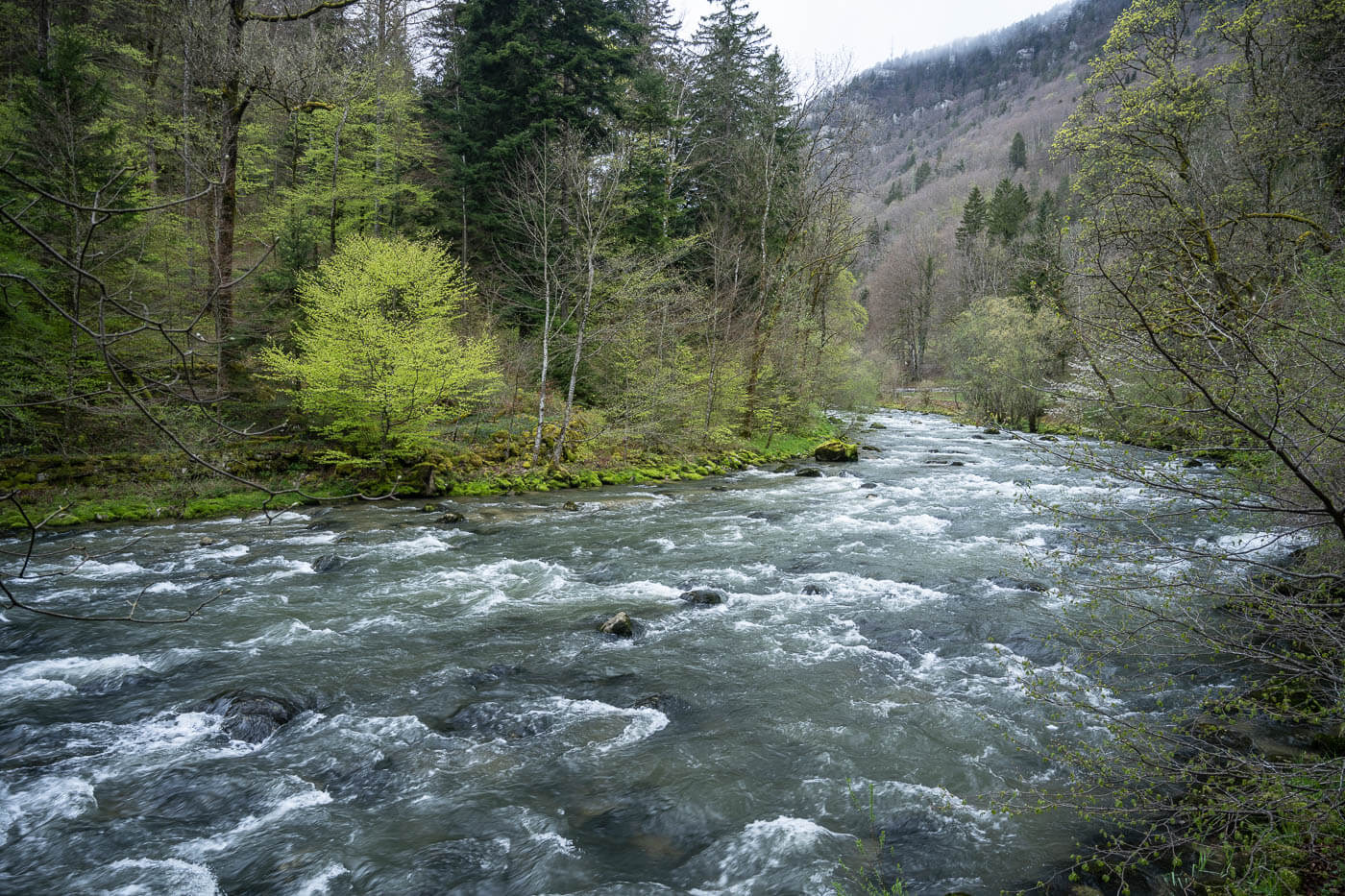
The first part follows the Areuse River downhill, before entering the gorges.
For another kilometer or so, the trail continues on a paved, next to the river. Then, as you approach the gorge, the trail enters a forest and becomes a well-maintained path that leads downhill, right to the viewpoint above the Saut de Brot Bridge.
The viewpoint is quite narrow and allows for 2-3 people max to stand there at the same time. The path here is also rather narrow, and it goes without saying, don’t step over the fences.
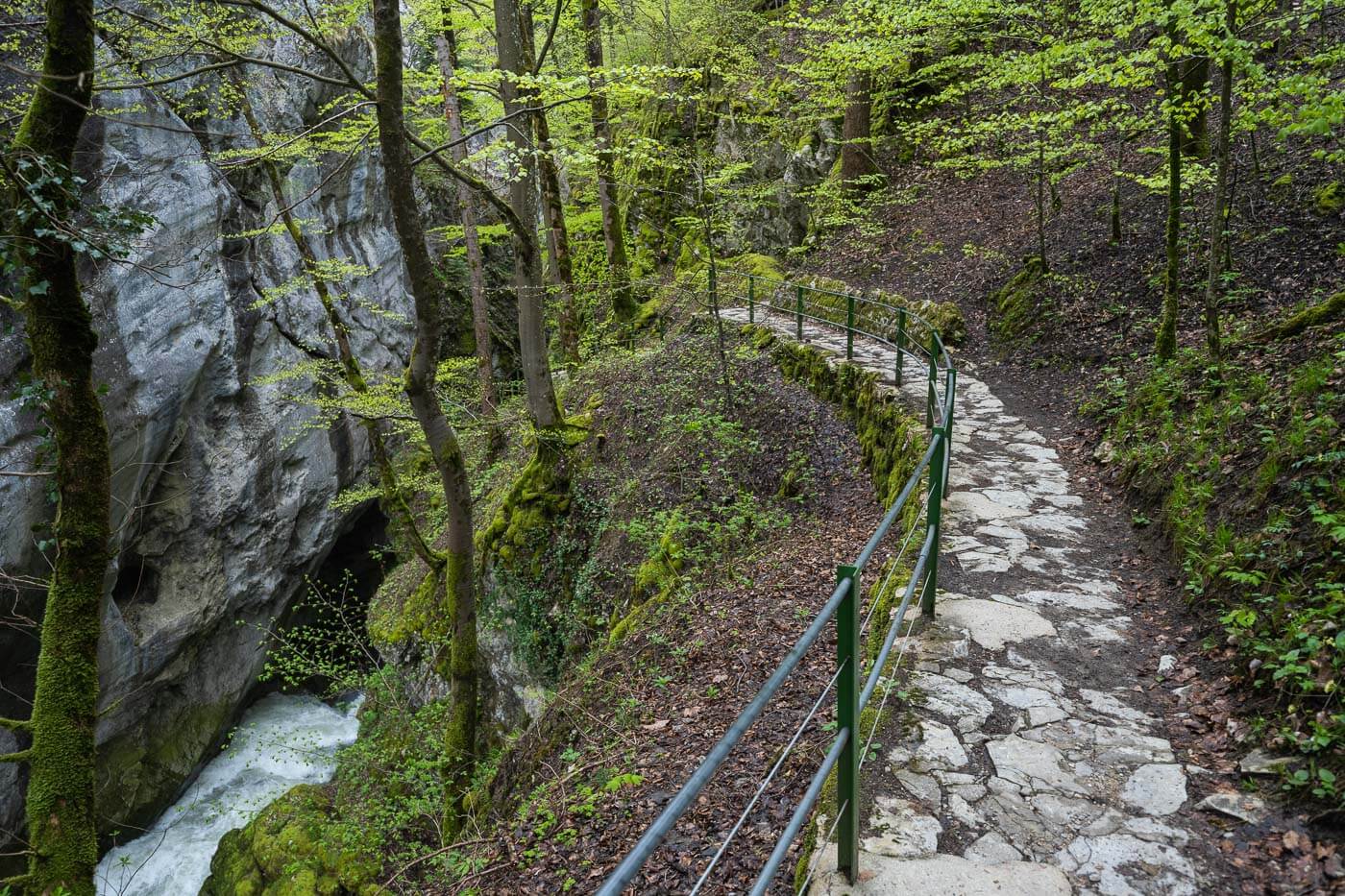
The trail then enters the forest, above the gorges.

A set of stairs leads down to the Saut the Brot viewpoint.

Saut de Brot

From there, the path continues down to the bridge and across it. Seeing the bridge unclose, and the narrow path carved in the rocks in the gorges, does make you wonder what it took to build it.
And, while surely this isn’t the work of some elves living hidden in the forest, this spot makes you wonder what kind of effort it took to build.
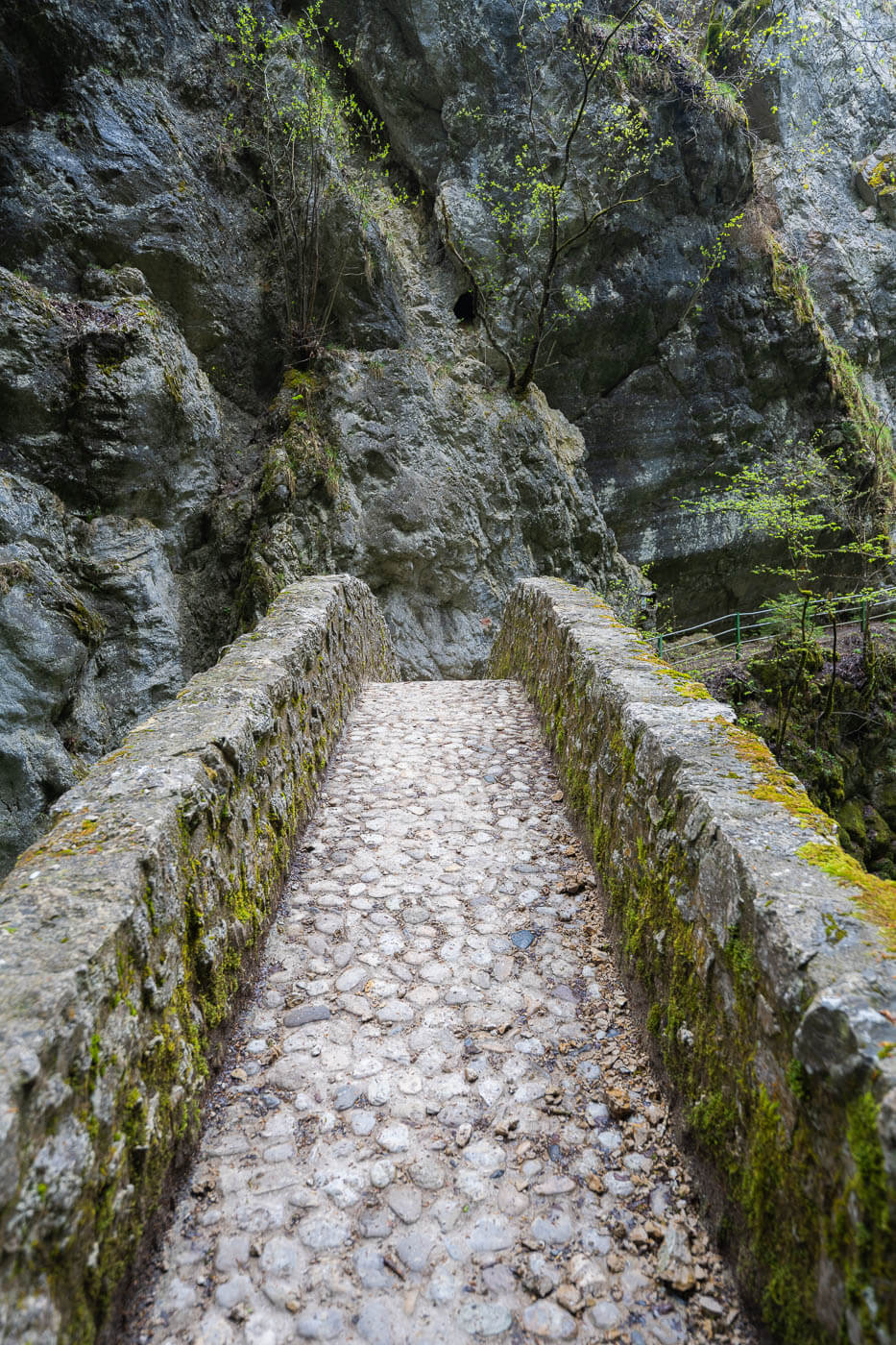

After the first turn, the river widens again, forming a small waterfall. From here, for the middle part of the hike, the trail is mostly either on gravel or paved roads through the forest and along the river.
The trail continues like that for a few more kilometers. Then, while approaching the last part, it crosses the river a couple of times and enters another forested area first, and more gorges for the last part. there are plenty of small waterfalls in the Areuse river further downstream too.
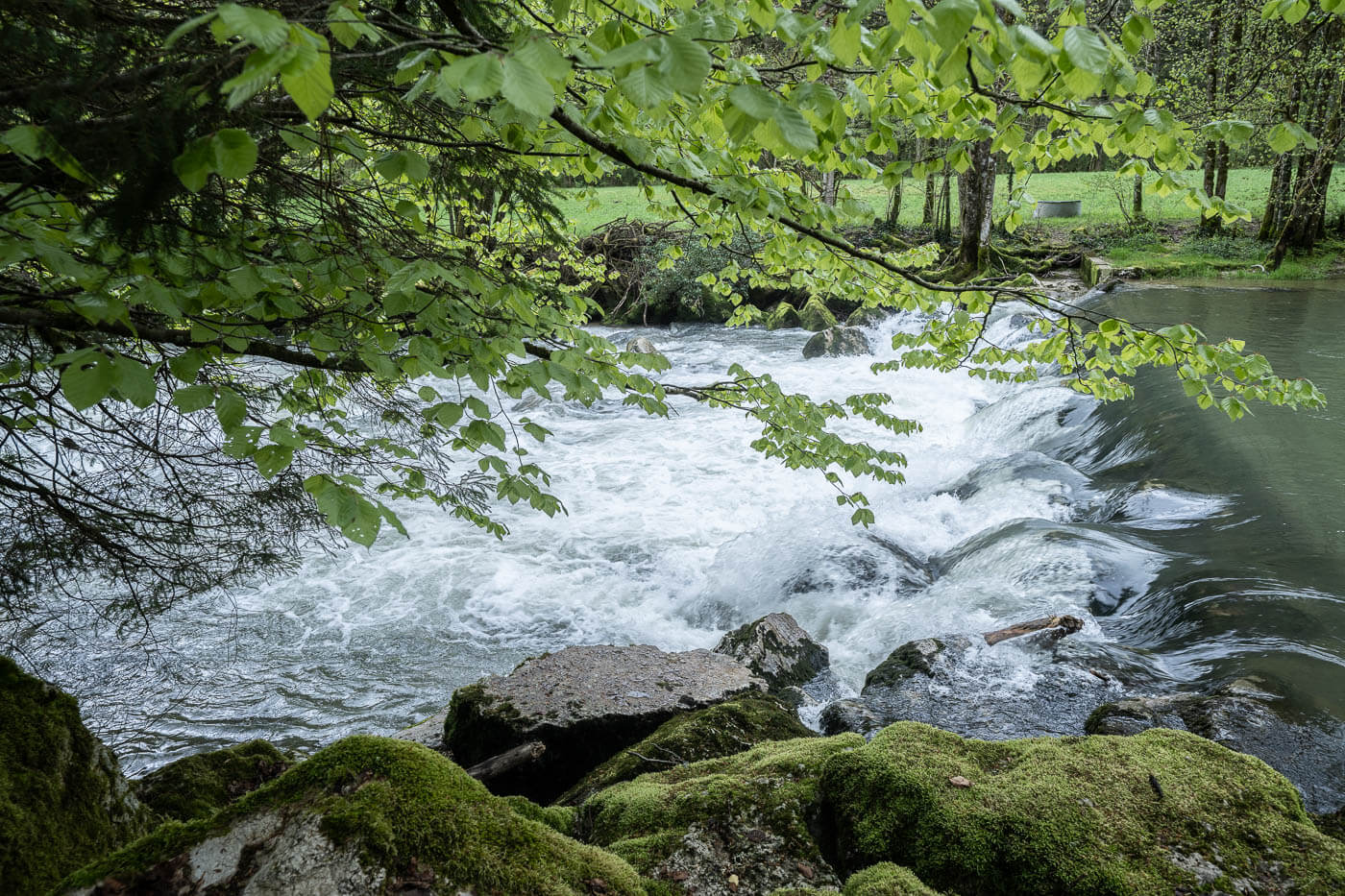
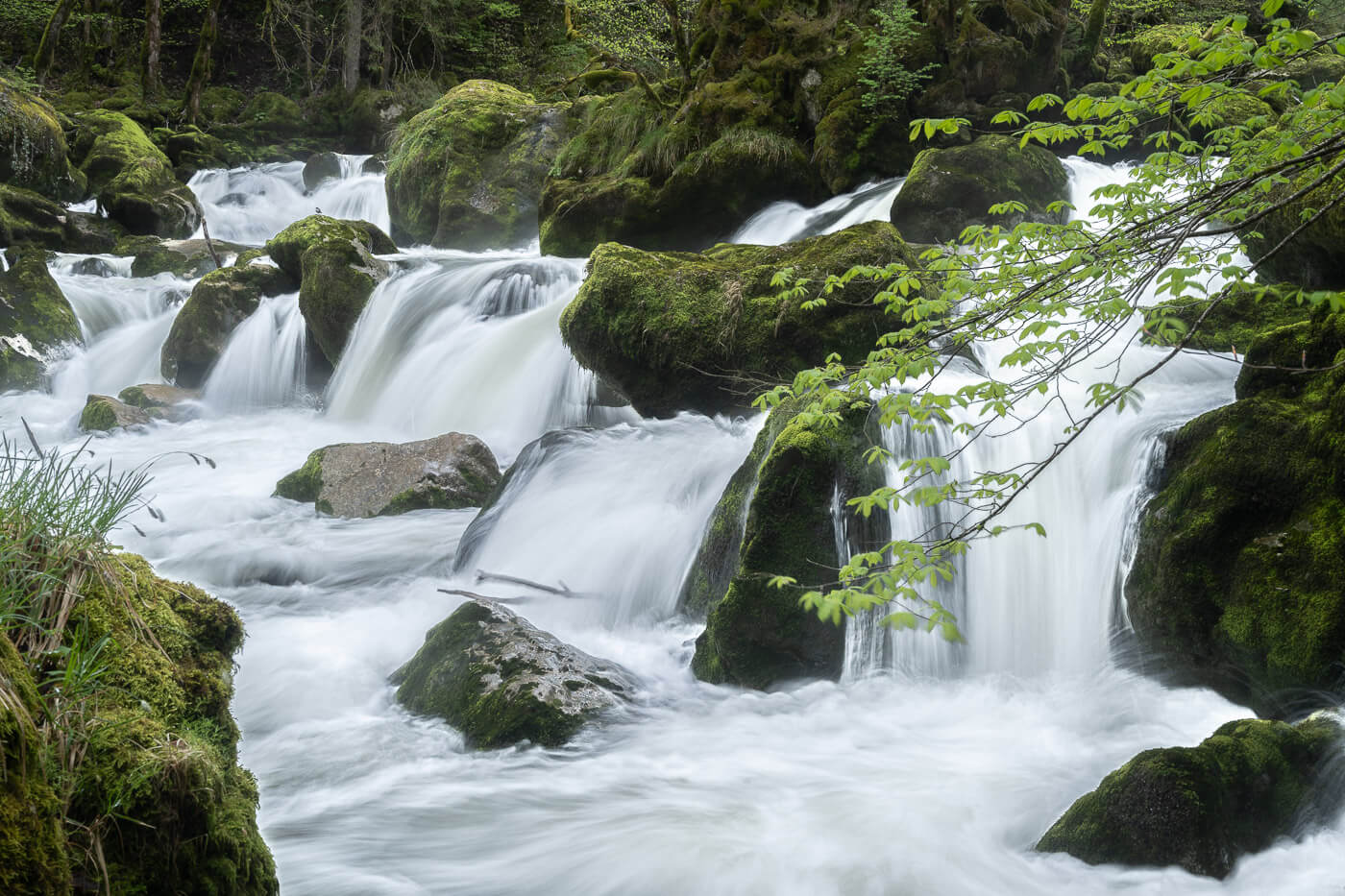
The Areuse river is filled with smaller waterfalls and moss-covered rocks.
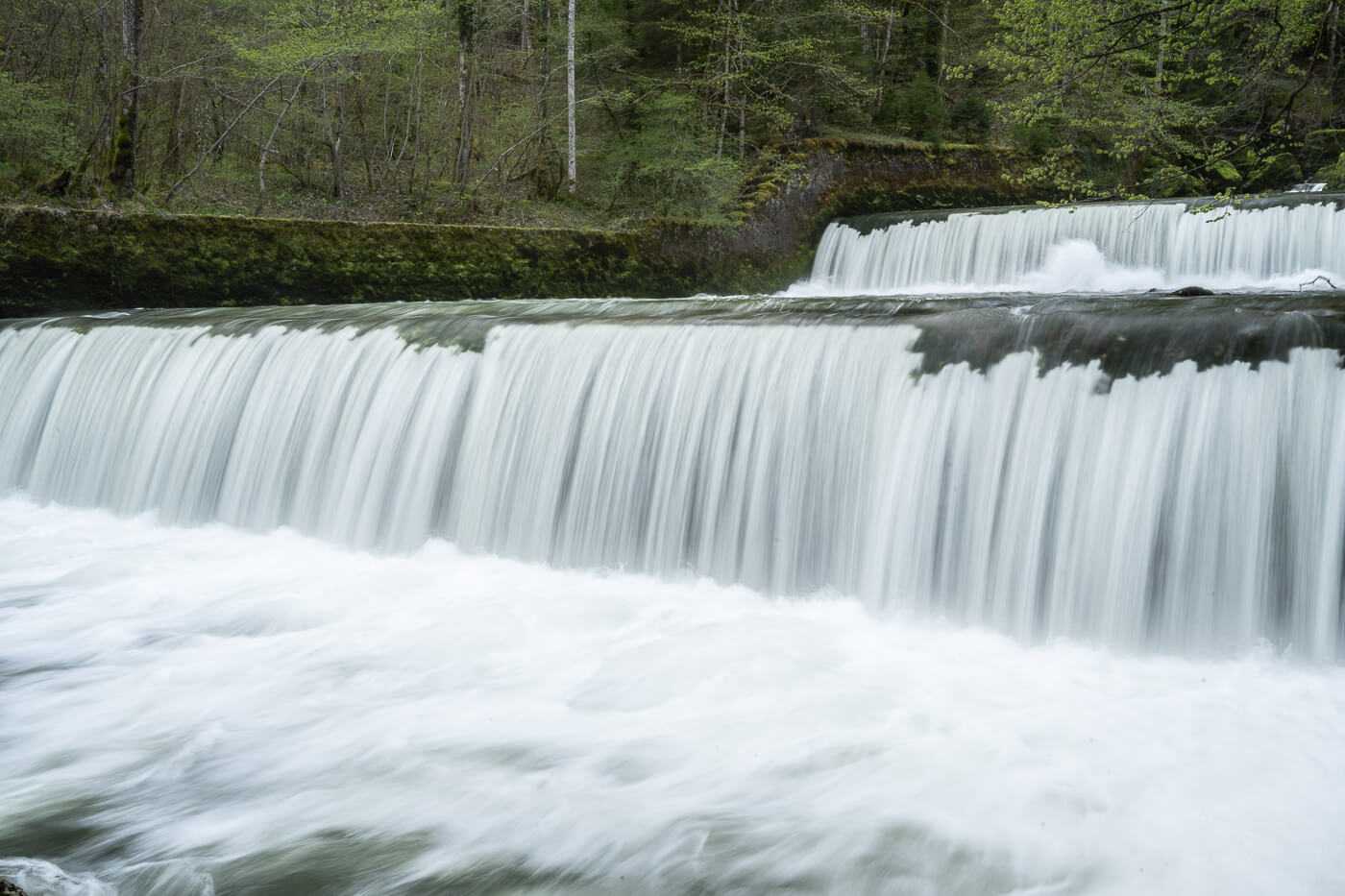
Here you have again a few more small waterfalls and narrow gorges to cross. Apart from the first part of the trail around the Saut de Brot bridge, this is probably the nicest part of the hike, as the area feels more “natural” compared to the upstream sections close to the hydroelectric power plants.
The trail and the gorges then widen again and lead back to Boudry.
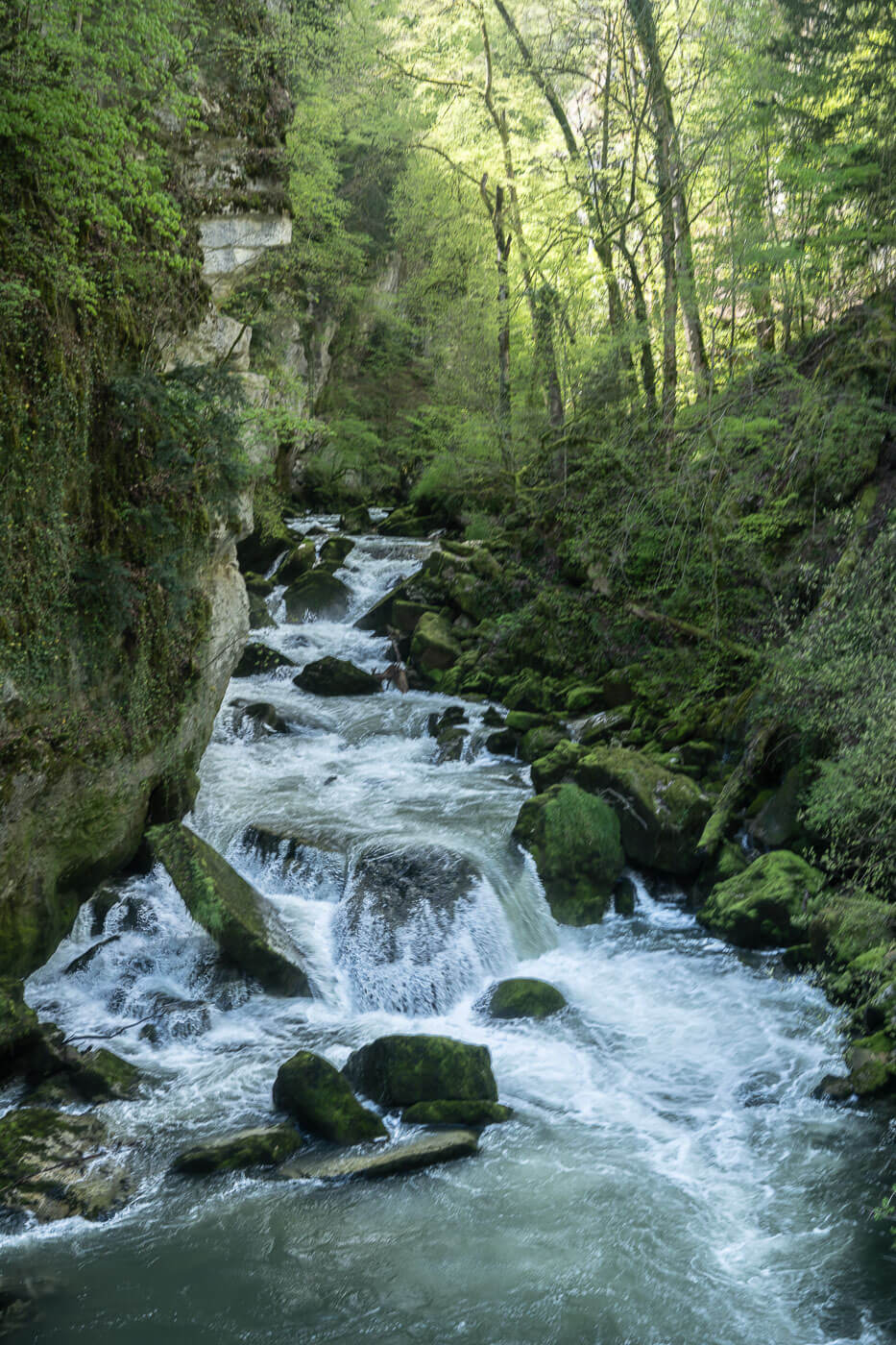

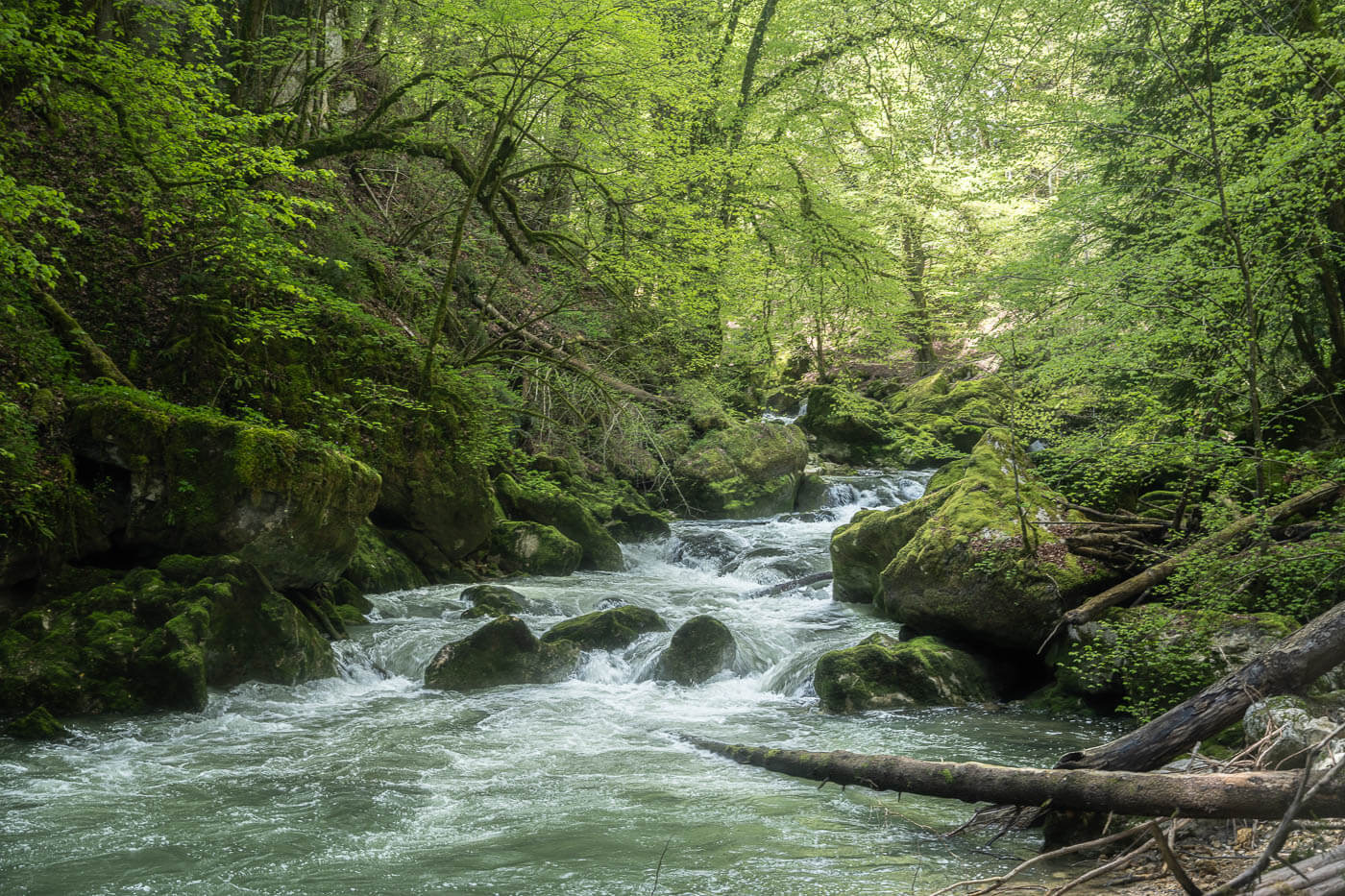
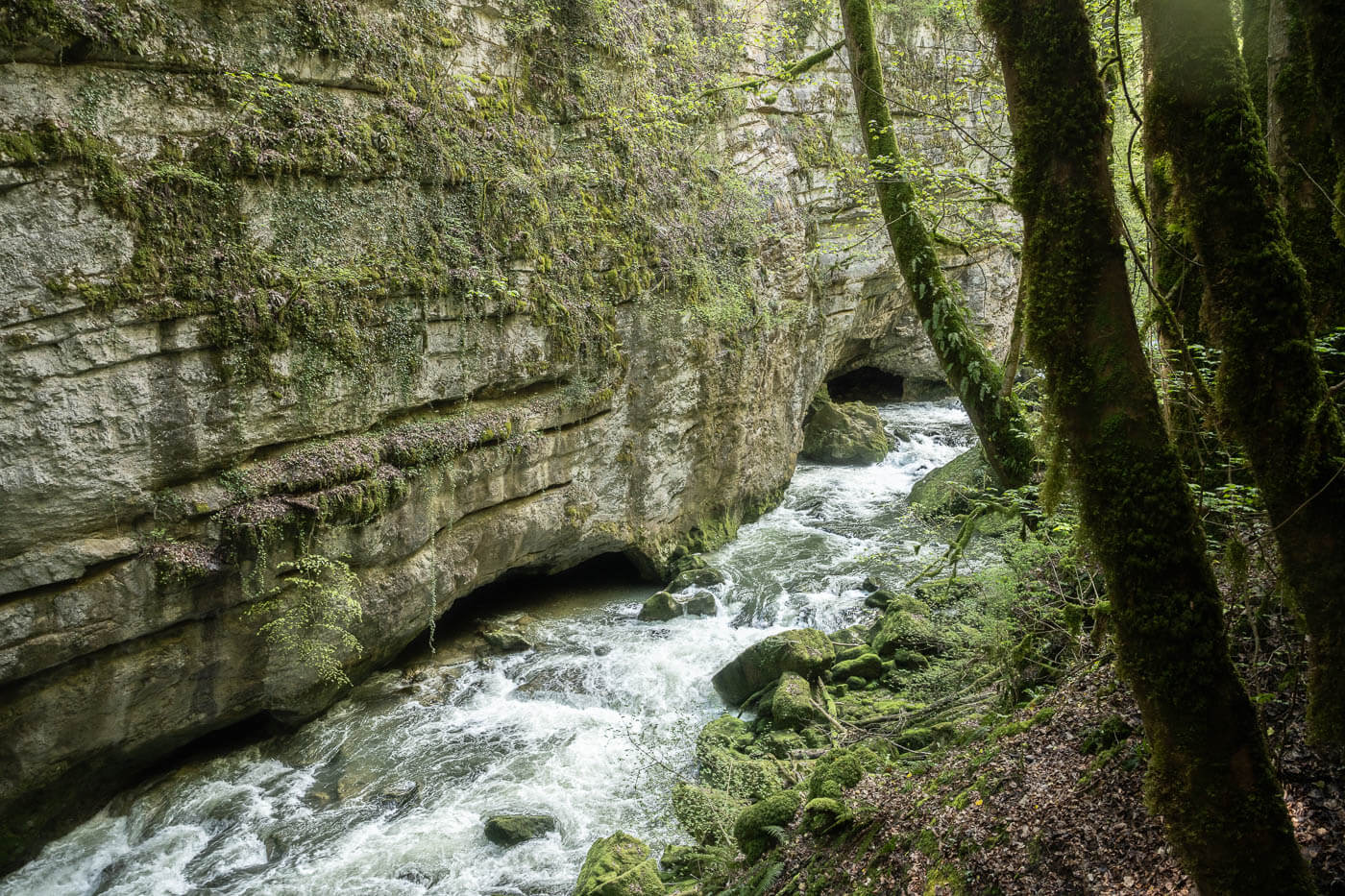
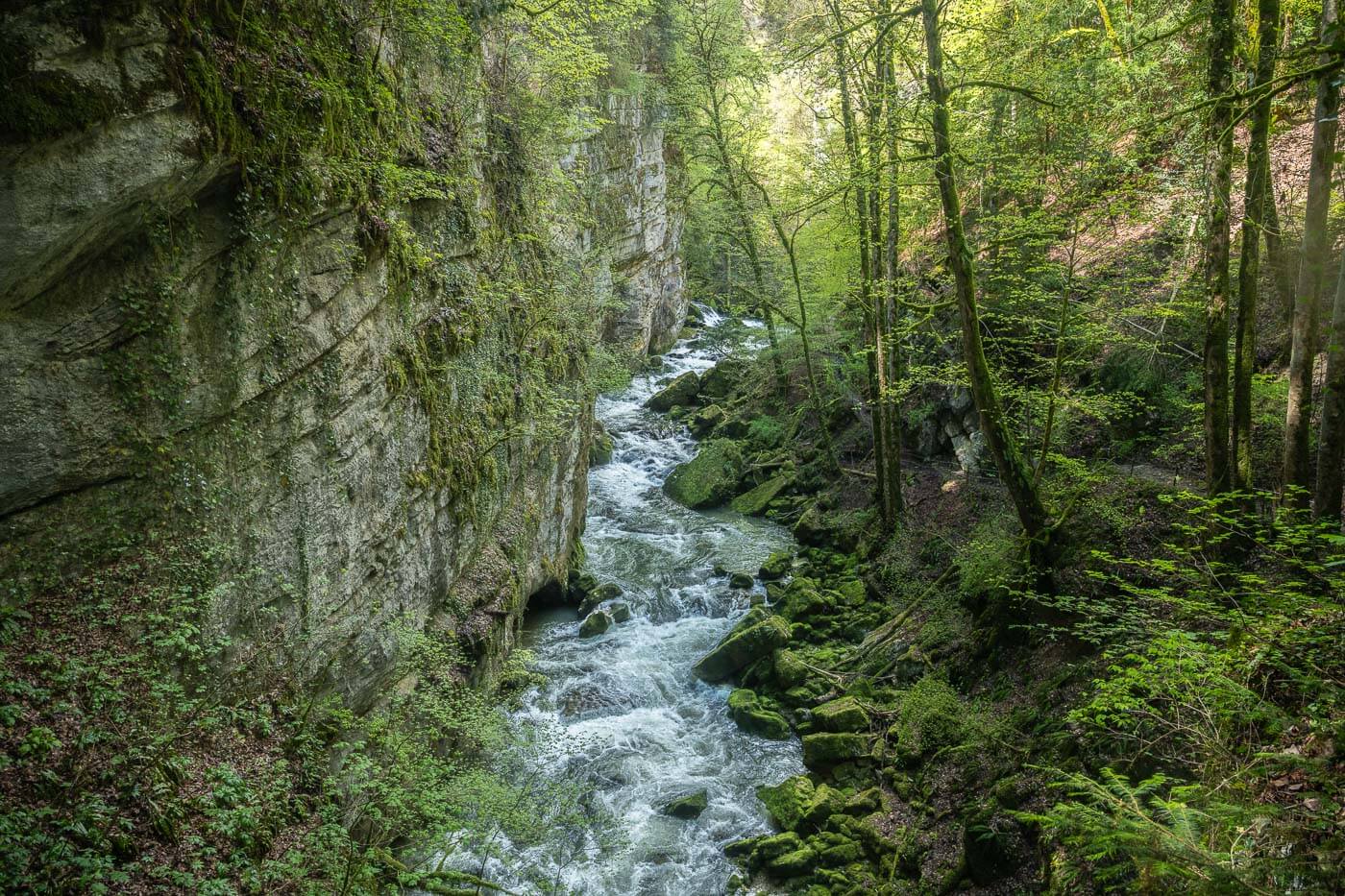
Gorges de l’Areuse & Saut De Brot Photos and Photography Tips
First and foremost, if you just want to get a shot of the Iconic stone bridge Saut de Brot, you don’t need to hike the whole trail. You can park in Noirague and hike down the trail for about 1.5/2 km to the viewpoint above the bridge.
You can also drive to a smaller parking area close to the railway crossing. It’s suitable only for a few cars, but worth a shot if you only want to get a photo of the Saut du Brot.
Also, unless it rains heavily, this is one spot where weather conditions don’t matter. With the view limited by the narrow gorge, by the vegetation, and the mountains around it, there’s little to no light coming through anyway.
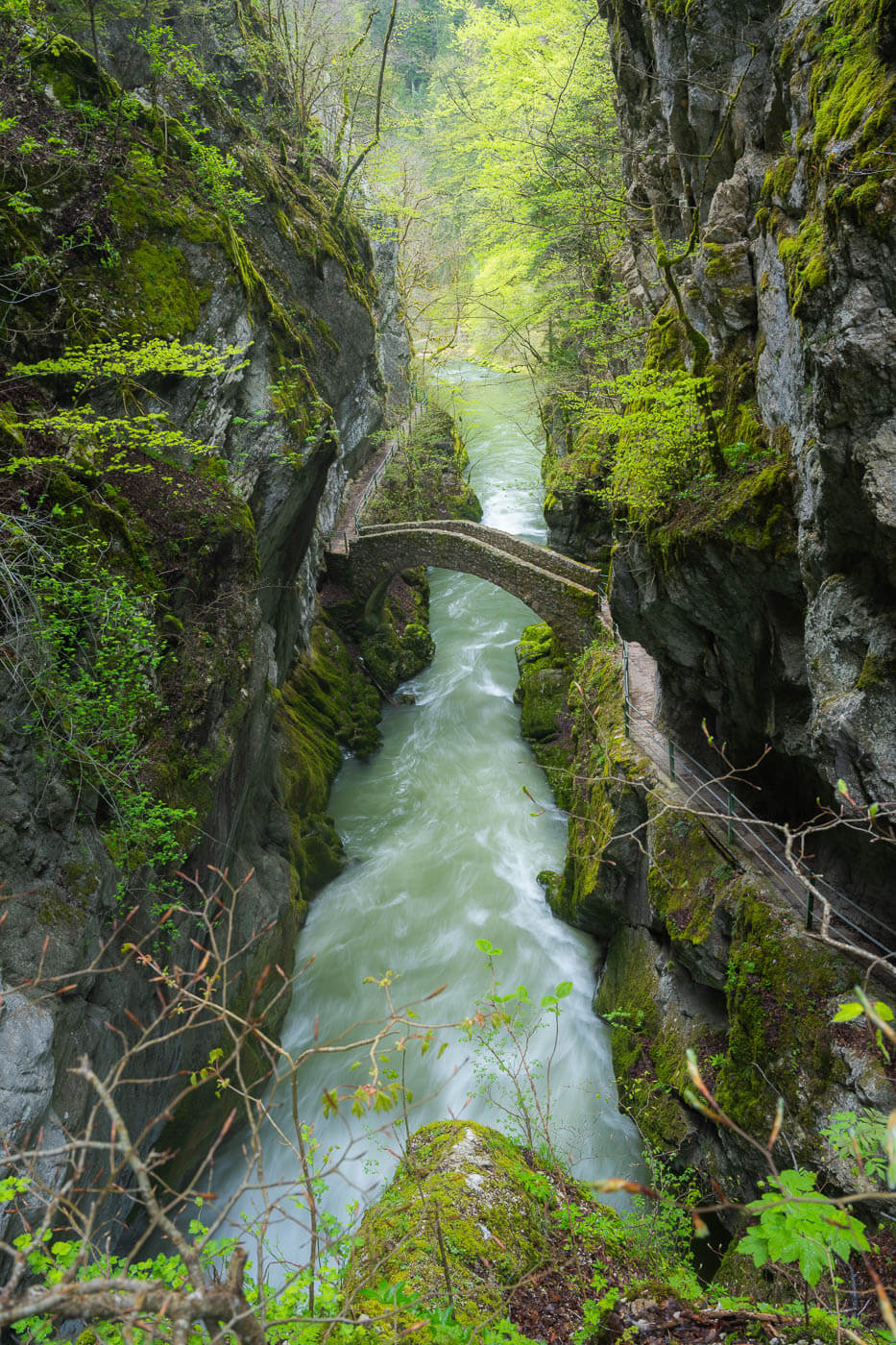
View form the Observation deck.
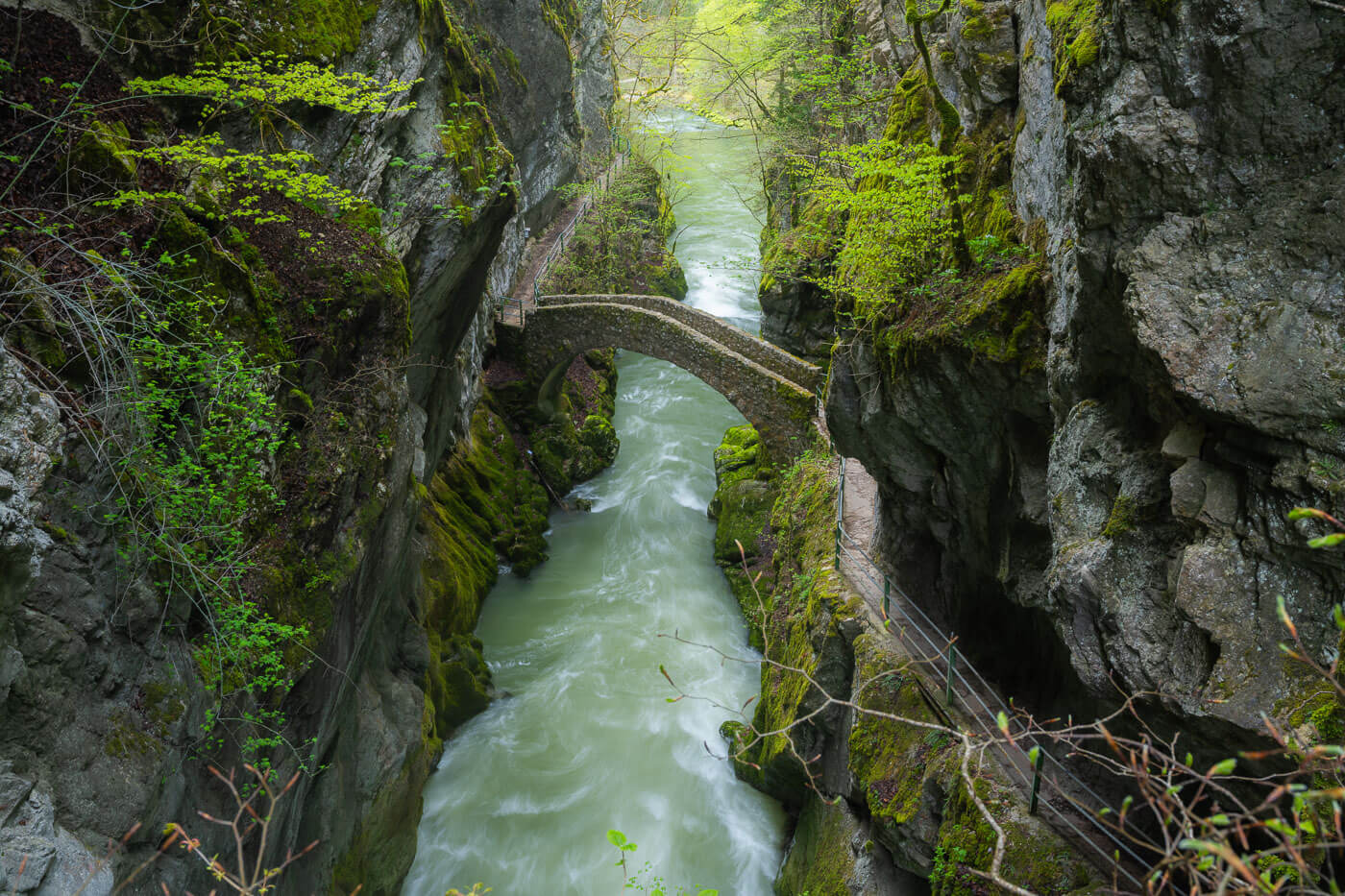
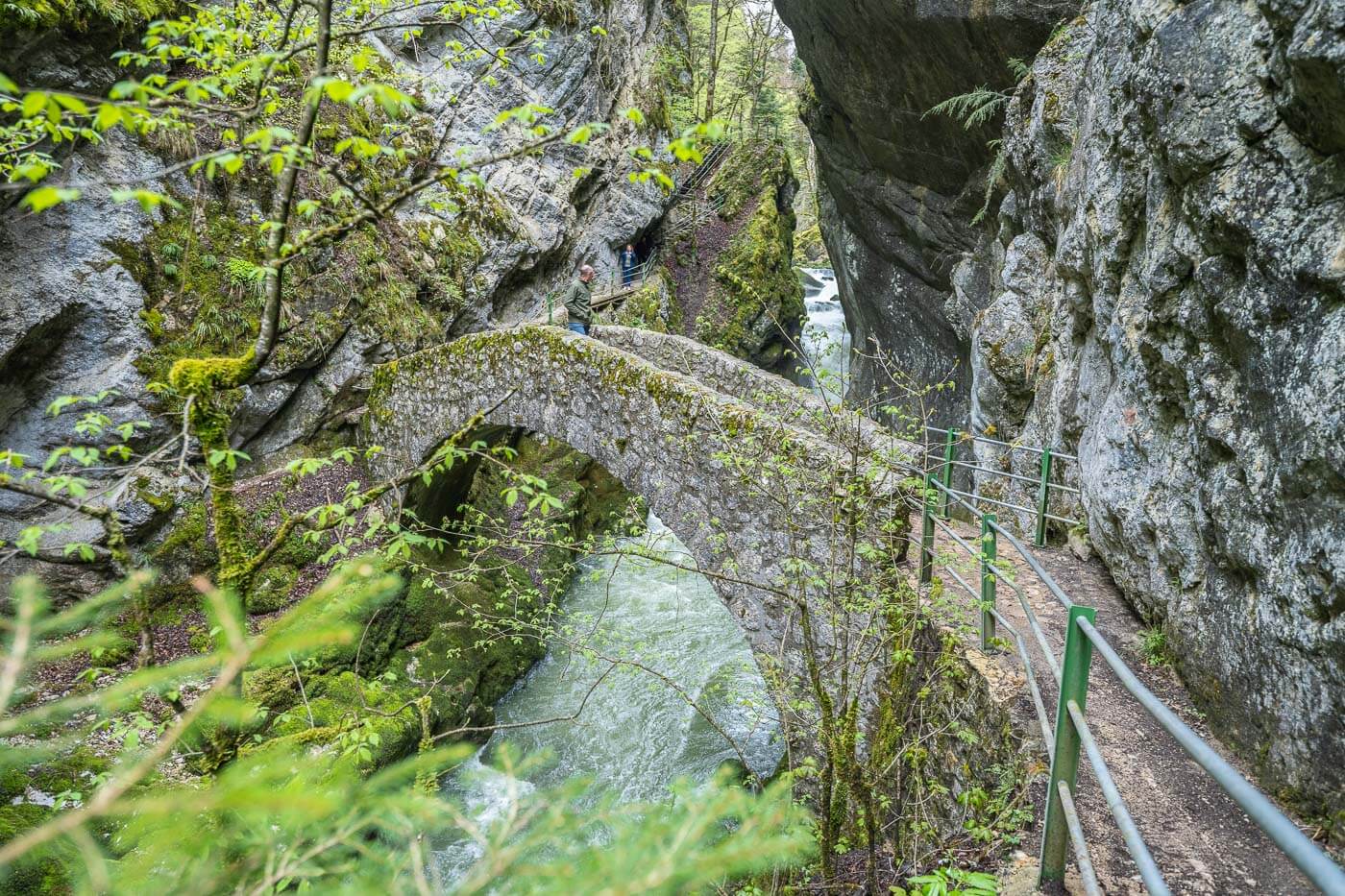
Other than that, do bring your tripod and ND filters as there are plenty of small waterfalls around! The Areuse river is dotter with smaller waterfalls and nice views of the river through the forest, which are fun to take photos of.
Generally speaking, I’d highly recommend a lens from 24mm and above. I found little use for anything wider. Except when perhaps going close to the bridge, the 14-mm lens stayed in the bag.

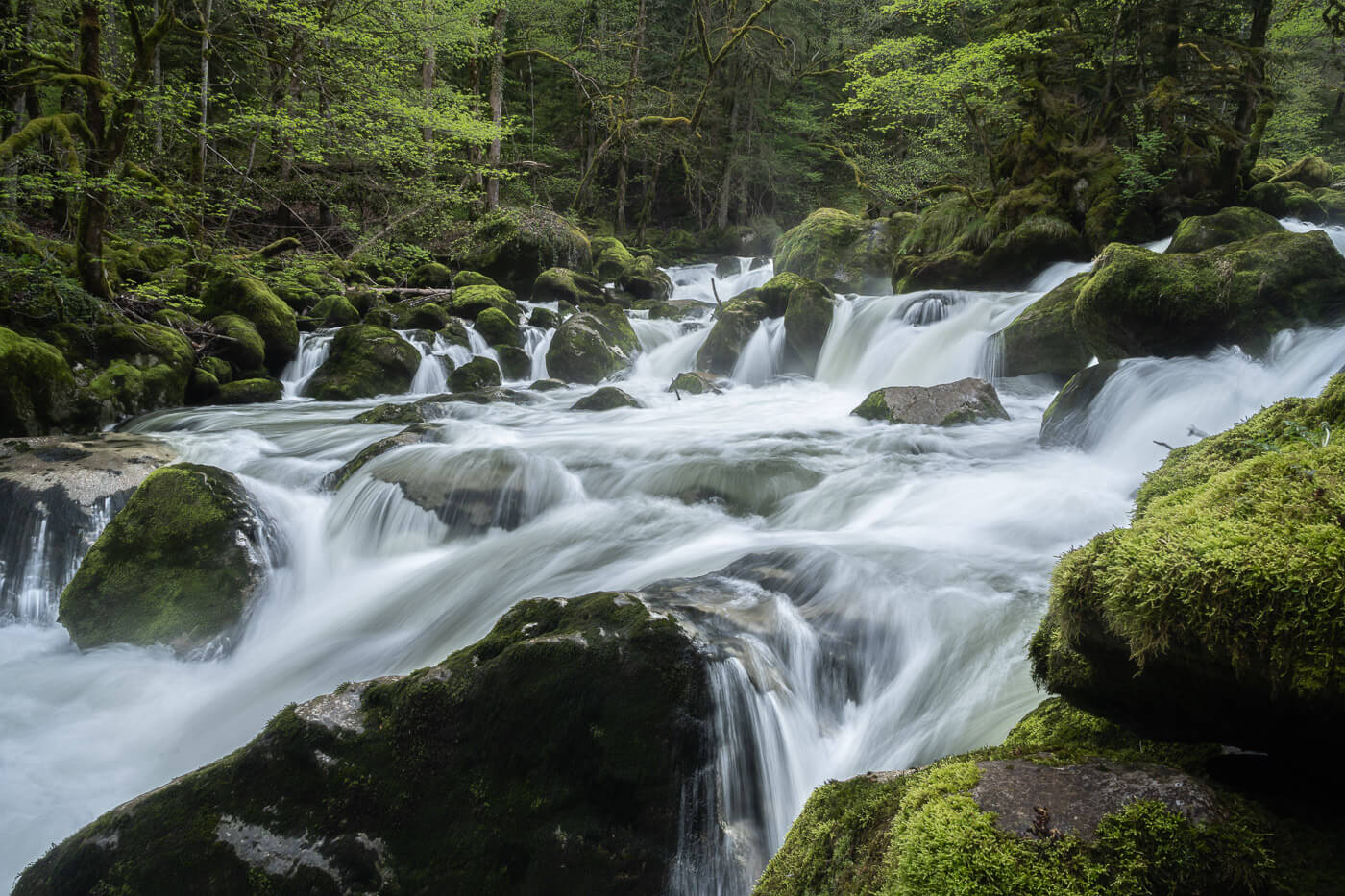

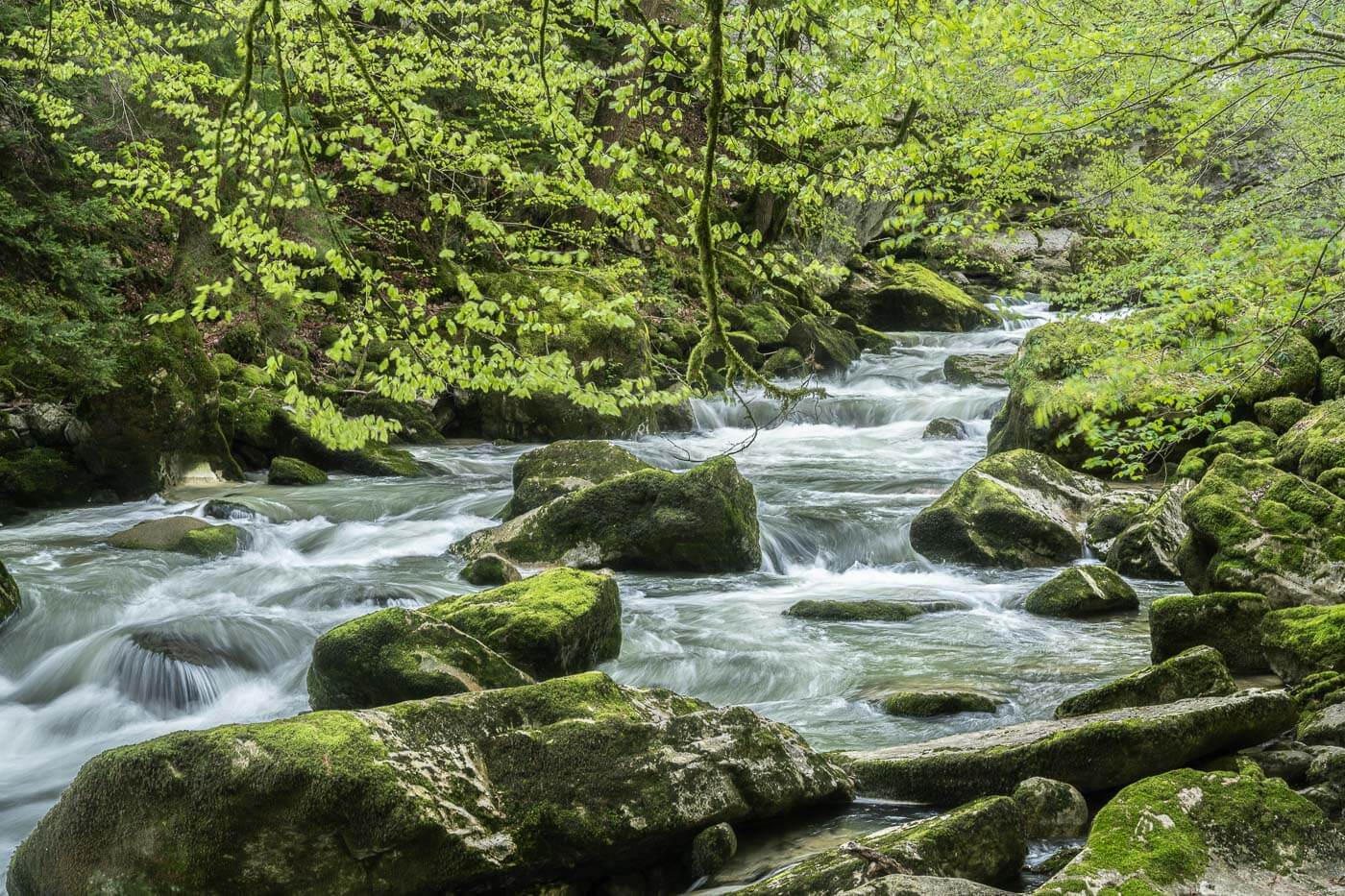
Where to stay
There are some hotels and other accommodations in both Noirague, but not many in either. Both locations are suitable if you are looking to spend the night in quiet countryside villages. These are also good options if you want to start the hike early in the morning or end it late in the evening.
Otherwise, there are plenty of accommodations to choose from around Lake Neuchâtel – or in the beautiful town of Neuchâtel itself.
Additional Resources
- If you are in the area, you may want to consider hiking to Creux du Van too, a beautiful horseshoe-shaped canyon.
- For a comprehensive overview of Hikes in Switzerland, check out my main Switzerland page.
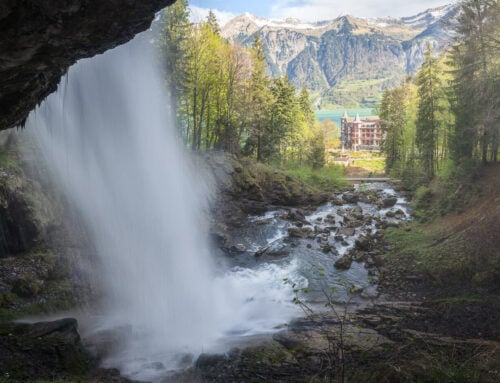
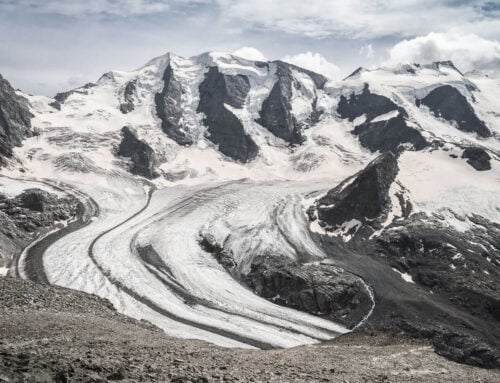
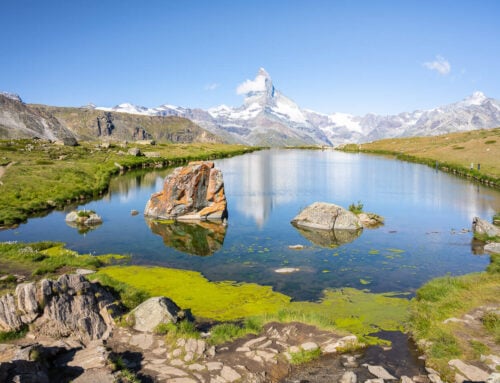

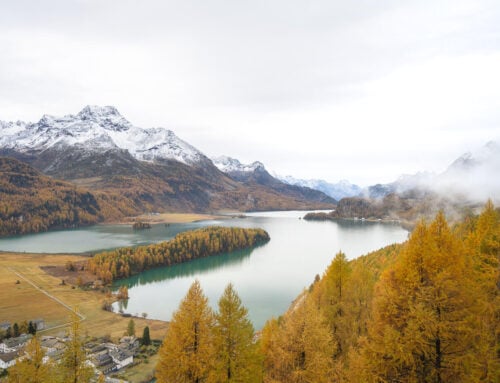
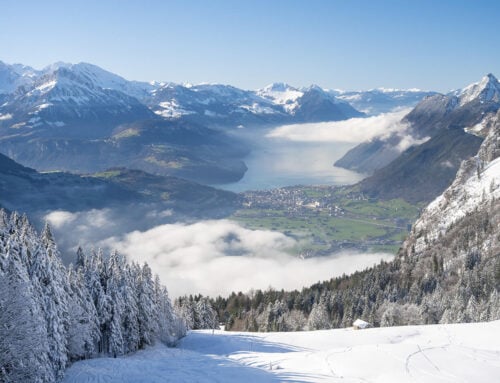
Leave A Comment